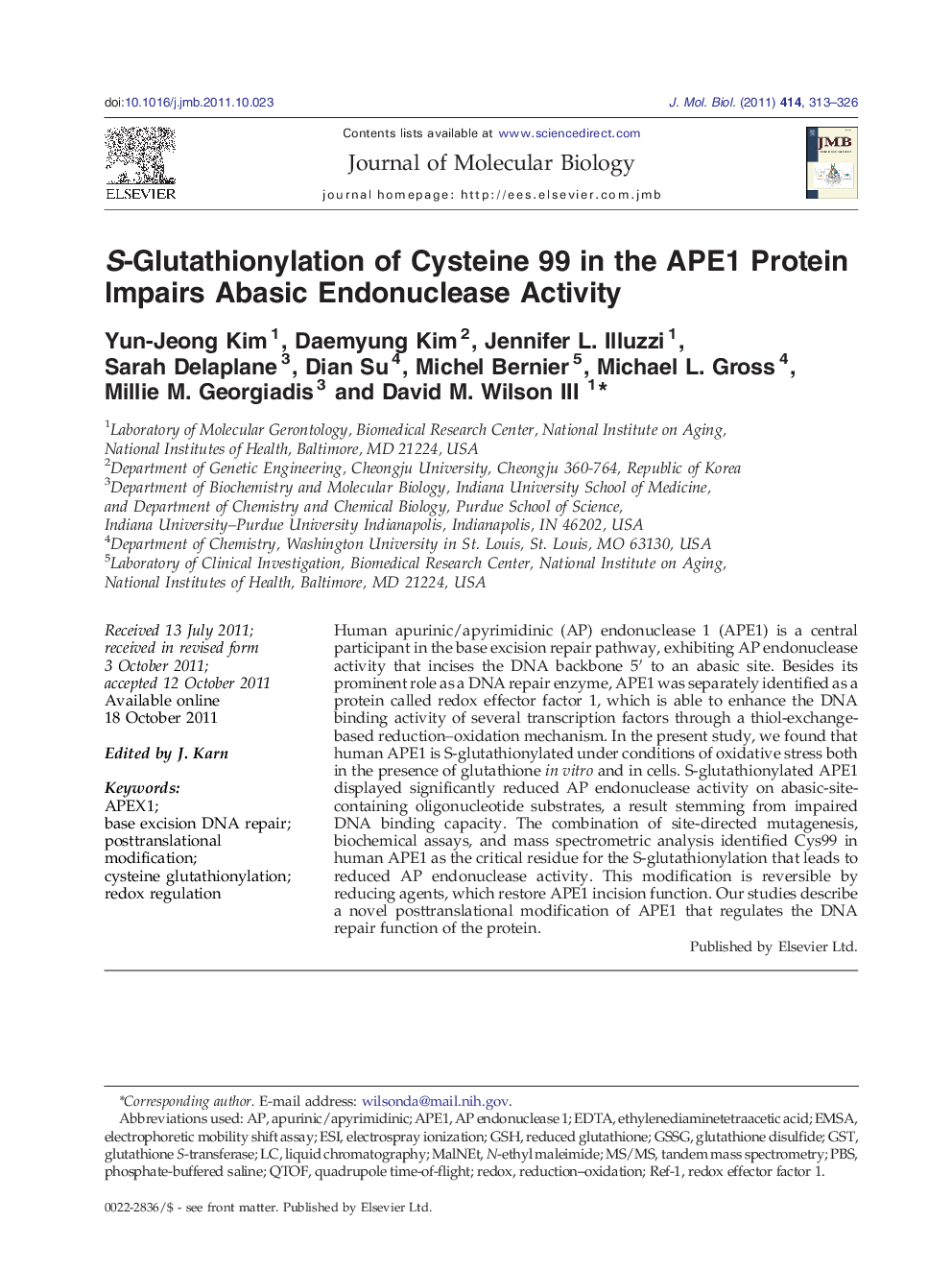| Article ID | Journal | Published Year | Pages | File Type |
|---|---|---|---|---|
| 2184882 | Journal of Molecular Biology | 2011 | 14 Pages |
Human apurinic/apyrimidinic (AP) endonuclease 1 (APE1) is a central participant in the base excision repair pathway, exhibiting AP endonuclease activity that incises the DNA backbone 5′ to an abasic site. Besides its prominent role as a DNA repair enzyme, APE1 was separately identified as a protein called redox effector factor 1, which is able to enhance the DNA binding activity of several transcription factors through a thiol-exchange-based reduction–oxidation mechanism. In the present study, we found that human APE1 is S-glutathionylated under conditions of oxidative stress both in the presence of glutathione in vitro and in cells. S-glutathionylated APE1 displayed significantly reduced AP endonuclease activity on abasic-site-containing oligonucleotide substrates, a result stemming from impaired DNA binding capacity. The combination of site-directed mutagenesis, biochemical assays, and mass spectrometric analysis identified Cys99 in human APE1 as the critical residue for the S-glutathionylation that leads to reduced AP endonuclease activity. This modification is reversible by reducing agents, which restore APE1 incision function. Our studies describe a novel posttranslational modification of APE1 that regulates the DNA repair function of the protein.
Graphical AbstractFigure optionsDownload full-size imageDownload high-quality image (356 K)Download as PowerPoint slideHighlights► APE1 is S-glutathionylated in vitro and in cells, and this modification is reversible by reducing agents. ► Glutathionylated APE1 displays reduced abasic endonuclease activity due to impaired DNA binding. ► Cys99 is the critical residue for the glutathionylation that leads to reduced endonuclease activity. ► The studies describe a novel posttranslational modification that regulates the APE1 DNA repair function.
